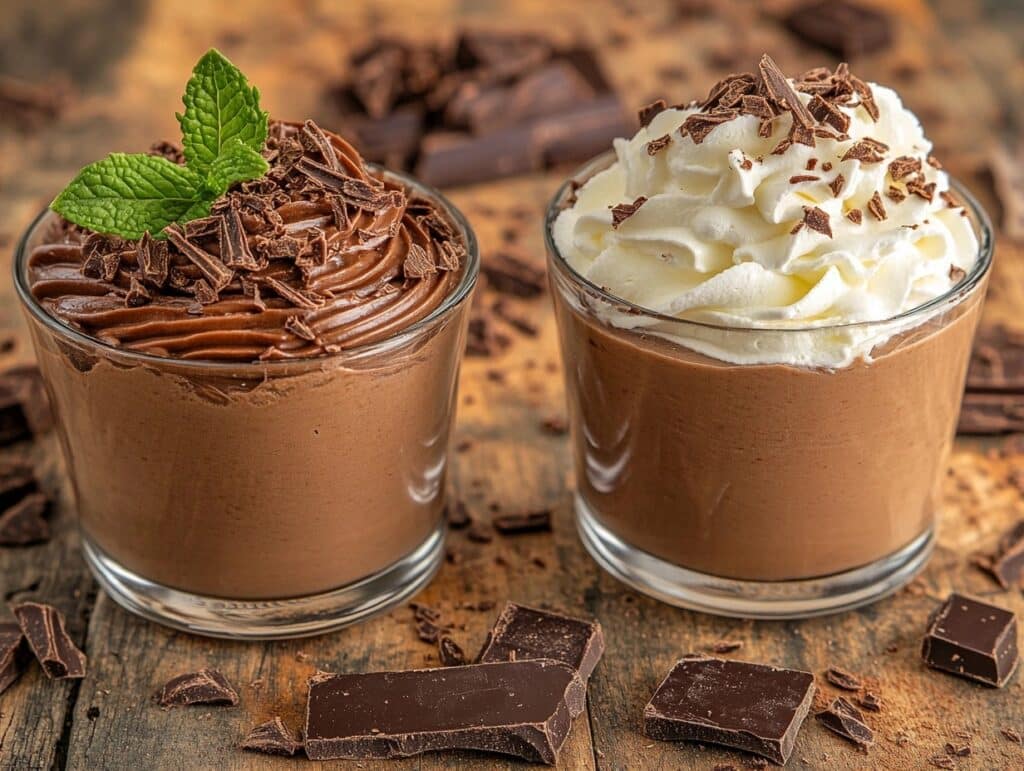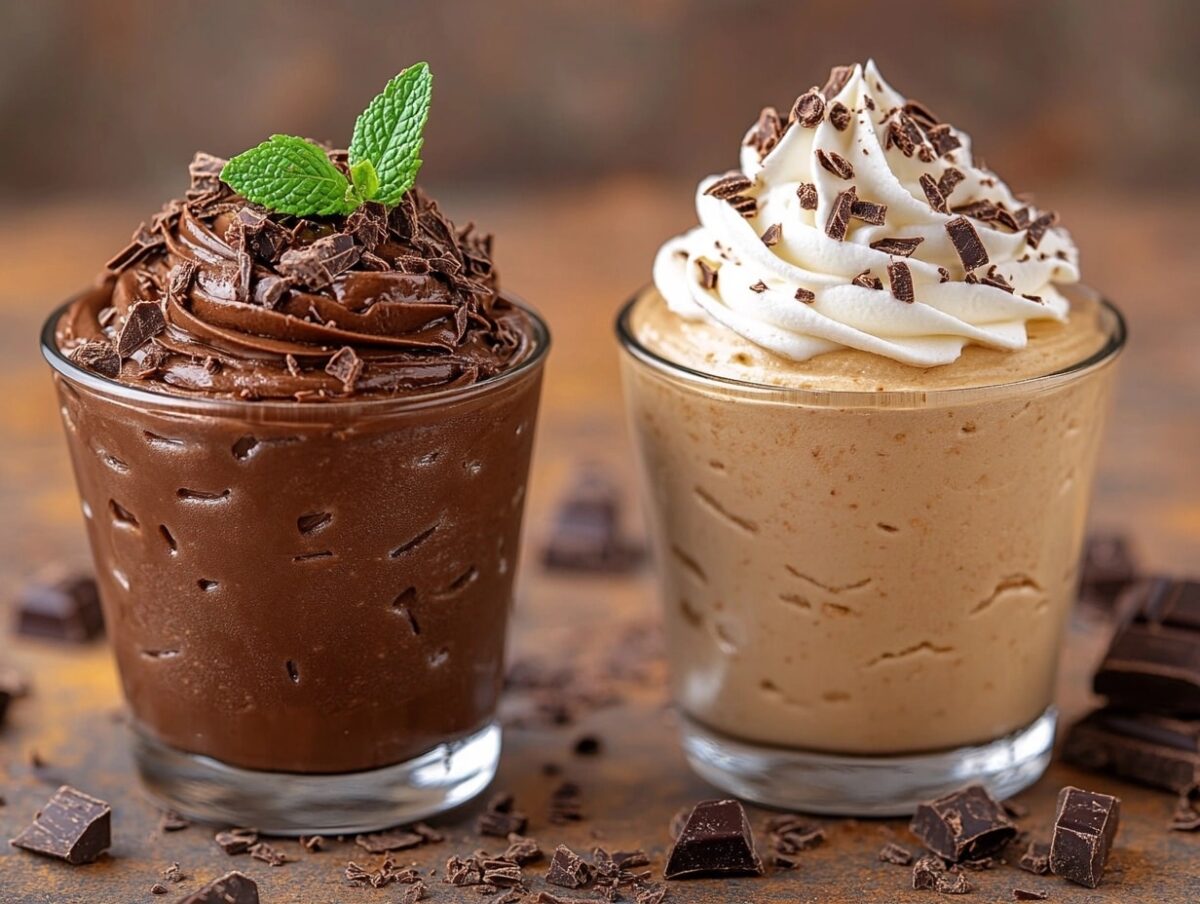Custard-based desserts are a favorite worldwide for their creamy, smooth textures and sweet, comforting flavors. Two of the most beloved custards, pudding and budino, often get confused because of their similar appearance. However, while these desserts may seem alike on the surface, they have key differences that set them apart in taste, texture, ingredients, and preparation methods. Whether you’re a dessert enthusiast looking to deepen your knowledge or someone trying to decide what to serve at your next dinner party, understanding the nuances between pudding and budino is essential.
Let’s take a deep dive into both desserts, explore their unique characteristics, and discover how you can enjoy these treats to the fullest.
What is Pudding?
Pudding has a long history, evolving over time into different variations across the globe. The word “pudding” itself has various meanings depending on where you are. In the United Kingdom, for example, pudding can refer to a savory or sweet dish, often baked or steamed. But in the United States, pudding is known primarily as a creamy, chilled dessert, much like what we will discuss here.
Definition and History
The roots of pudding can be traced back to medieval European dishes, which were often savory rather than sweet. Over time, as sugar became more widely available, sweeter versions of pudding developed. In America, what we refer to as pudding today is a smooth, sweet dessert made with milk, sugar, and a thickening agent such as cornstarch or gelatin. Unlike its baked British counterpart, American pudding is cooked on the stovetop and then chilled. In the early 20th century, the invention of instant pudding mixes further popularized this dessert, making it a convenient and affordable treat for households. These ready-made mixes only require the addition of milk and a few minutes of stirring to achieve a thick, creamy consistency.
Texture and Ingredients
American pudding is known for its light and creamy texture. This smoothness is achieved by using ingredients like cornstarch or gelatin to thicken the milk-based mixture. The absence of eggs makes it less dense compared to richer desserts like budino, which relies heavily on egg yolks.
Key ingredients include:
- Milk: Typically whole milk is used for a creamier texture, but low-fat or even plant-based milks (like almond or oat milk) can be used for a lighter or dairy-free version.
- Cornstarch: The primary thickening agent in pudding, responsible for its smooth, silky consistency.
- Sugar: To sweeten the mixture, balancing the creamy texture with a delightful taste.
- Flavorings: Vanilla is the most common, but chocolate, butterscotch, and other flavors can also be incorporated.
Popular Variations
Pudding comes in many delicious variations that have become classic desserts on their own. Some of the most popular include:
- Chocolate Pudding: Made by adding cocoa powder or melted chocolate, this rich variation is a favorite among children and adults alike.
- Vanilla Pudding: A simple, classic pudding flavored with vanilla extract or vanilla bean for a delicate, aromatic dessert.
- Rice Pudding: This variation incorporates cooked rice into the creamy base, adding texture and depth to the dessert.
- Tapioca Pudding: Made with tapioca pearls, this version has a unique, chewy texture that sets it apart from other puddings.
Serving Style
Pudding is most often served chilled in small bowls, although it can be enjoyed warm as well. Common toppings include whipped cream, fresh fruit, or sprinkles of cinnamon or cocoa powder for added flavor and presentation. It’s also frequently used as a filling for pies, cakes, and other layered desserts.
For a simple and quick dessert, pudding remains one of the most convenient and versatile options available. Explore more pudding recipes at SofyaRecipes.
What is Budino?
Budino is Italy’s answer to pudding, but with a twist. This custard-based dessert offers a much richer experience, with an indulgent texture that leaves a lasting impression. While the term “budino” translates directly to “pudding” in Italian, the dessert itself is far more luxurious than its American counterpart.
Definition and History
Budino has its origins in Italy, where the term can refer to a variety of desserts, including both baked and chilled options. Historically, budino was more of a general term for puddings, ranging from sweet to savory. However, today, when people mention budino, they are typically referring to a sweet, chilled custard made with milk, eggs, and sugar. This dessert is a staple of Italian cuisine and is frequently served in elegant dining settings.
One of the reasons budino stands out is its rich texture, achieved through the use of egg yolks. While American puddings rely on cornstarch or gelatin for thickness, budino uses the proteins and fats in egg yolks to create a dense, creamy consistency that feels decadent on the palate.
Texture and Ingredients
Budino’s texture is where it truly shines. The addition of egg yolks and butter gives it a richness that pudding lacks. The custard is smoother, thicker, and more luxurious, making it ideal for special occasions or fancy dinners.
Key ingredients include:
- Milk: Like pudding, budino is traditionally made with whole milk, but cream can also be used for an even richer result.
- Egg yolks: The use of egg yolks adds depth and richness to the custard, giving it a velvety texture.
- Cornstarch: A small amount is often used to stabilize the custard and ensure it sets properly.
- Butter: Adds a smooth finish to the custard.
- Flavorings: Vanilla, chocolate, and caramel are popular choices, with some recipes incorporating ingredients like lemon zest or coffee for a more complex flavor profile.
Popular Variations
Budino, like pudding, can be made in various flavors, each offering a unique experience. Some popular variations include:
- Chocolate Budino: A deeply indulgent dessert made by adding melted chocolate or cocoa powder to the custard.
- Butterscotch Budino: The sweet and salty flavors of butterscotch combine perfectly with the richness of the custard for a decadent treat.
- Lemon Budino: Zesty and refreshing, lemon budino offers a lighter take on the traditional dessert, making it ideal for warm weather.
- Coffee Budino: This sophisticated variation incorporates espresso or coffee into the custard, giving it a rich, bitter note that contrasts beautifully with the sweetness of the dessert.
Budino is often served chilled in individual portions, such as small ramekins or dessert cups, and is frequently topped with whipped cream, caramel sauce, or a sprinkling of nuts or crushed cookies. Try this homemade budino recipe for a luxurious dessert experience.
Key Differences Between Pudding and Budino
Despite both being custard-based desserts, pudding and budino have several important differences that make them suitable for different occasions and preferences.

Texture
The most apparent difference between pudding and budino is their texture. Pudding has a light, smooth consistency, thanks to the use of cornstarch or gelatin. Budino, however, is denser and creamier, primarily due to the inclusion of egg yolks and butter. While pudding offers a simple, comforting treat, budino feels more indulgent and luxurious, making it perfect for special occasions.
Ingredients
The ingredients used in these two desserts also differ significantly. Pudding is typically made with milk, sugar, and cornstarch, with no need for eggs. Budino, on the other hand, relies heavily on egg yolks to achieve its rich texture. The inclusion of butter and cream in some recipes adds even more depth and flavor to the dessert.
Cultural Origins
Pudding, particularly in its American form, is a quick and easy dessert that is commonly made at home or bought pre-made. Its simplicity and affordability have made it a staple in many households. Budino, in contrast, hails from Italy, where it is often made from scratch and served in high-end restaurants or for special family gatherings. Its more labor-intensive preparation gives it a reputation as a gourmet dessert.
Serving Presentation
Pudding is usually served in a straightforward manner—poured into bowls or cups and topped with whipped cream, fruit, or nuts. Budino, however, is often presented in individual ramekins or elegant dessert cups, and its toppings tend to be more elaborate. Caramel sauce, crushed biscotti, or candied nuts are popular garnishes for budino, making it as visually appealing as it is delicious.
For an in-depth comparison of other custard-based desserts, you can explore this comprehensive guide on custard variations.
Popular Recipes to Try at Home
Classic Chocolate Pudding Recipe
A simple, yet delicious recipe for chocolate pudding. Perfect for a quick and easy dessert, requiring only a few basic ingredients.
Ingredients:
- 2 cups whole milk
- 1/3 cup sugar
- 1/4 cup cocoa powder
- 3 tablespoons cornstarch
- 1 teaspoon vanilla extract
Instructions:
- In a medium saucepan, whisk together sugar, cocoa powder, cornstarch, and a pinch of salt.
- Gradually add milk while whisking constantly.
- Place the saucepan over medium heat and cook, whisking continuously, until the mixture thickens and begins to bubble.
- Remove from heat and stir in vanilla extract.
- Pour the pudding into serving bowls and chill for at least 2 hours before serving. Top with whipped cream if desired.
Classic Vanilla Budino Recipe
For those looking to indulge, this vanilla budino recipe is the perfect solution. Rich, creamy, and full of flavor, it’s sure to impress your guests.
Ingredients:
- 2 cups whole milk
- 3 large egg yolks
- 1/3 cup sugar
- 2 tablespoons cornstarch
- 1 teaspoon vanilla extract
- 1 tablespoon butter
Instructions:
- Heat the milk and vanilla extract in a saucepan over medium heat until it begins to steam, but not boil.
- In a separate bowl, whisk together the egg yolks, sugar, and cornstarch.
- Slowly pour the warm milk into the egg mixture, whisking constantly to prevent scrambling.
- Return the mixture to the saucepan and cook over medium heat, stirring continuously, until the custard thickens.
- Stir in the butter and continue to cook for another minute.
- Pour the custard into individual ramekins and refrigerate for at least 4 hours.
- Top with caramel sauce or whipped cream before serving.
FAQs: Frequently Asked Questions
Can budino be made ahead of time?
Yes, budino is an excellent make-ahead dessert. In fact, it benefits from being chilled for several hours, allowing the flavors to meld together and the custard to firm up. You can prepare budino the night before and store it in the fridge for up to three days.
Is budino served hot or cold?
While budino is traditionally served cold to allow the custard to set properly, certain variations, such as baked or steamed budinos, can be enjoyed warm. However, the more common chilled version offers a refreshing, creamy texture.
Can pudding be as rich as budino?
Pudding, a classic dessert, can be enriched by adding ingredients like heavy cream or egg yolks, which help thicken its texture and enhance its creaminess. These additions make the pudding smoother and more satisfying but may still fall short in terms of the richness and depth provided by budino.
Budino, on the other hand, is crafted with a combination of butter and egg yolks, ingredients that contribute significantly to its rich texture and complex flavor profile. The inclusion of butter adds a silky, melt-in-your-mouth quality, while the egg yolks provide a custard-like consistency that is both dense and creamy. This makes budino an inherently more indulgent and luxurious dessert compared to traditional pudding.
The differences in ingredients and preparation methods between pudding and budino not only affect their textures but also their overall culinary experiences. Budino, with its rich and sumptuous qualities, tends to be favored for more special or sophisticated occasions, offering a dessert experience that feels more elevated than the typically lighter and simpler pudding.
Can budino be frozen?
When it comes to preserving the quality of budino, freezing is not the optimal choice. This is because budino, a type of custard, contains ingredients like milk and eggs that can react poorly to freezing temperatures. The main issue arises when the custard is thawed; the texture may alter significantly, often becoming grainy or watery. This change in texture can detract from the creamy and smooth consistency that characterizes a properly prepared budino.
To maintain the best quality of budino, it should be stored in the refrigerator. Chilling in the fridge will keep it at a stable temperature, preventing the texture from changing and preserving its flavors. Typically, budino should be consumed within a few days of preparation. Eating it fresh ensures that you experience the dessert in its optimal state, enjoying the rich and creamy texture that makes budino a special treat.
Conclusion: Which One Should You Try?
The decision between choosing pudding or budino really hinges on personal tastes and the specific occasion. Pudding is an excellent choice if you’re seeking a dessert that is both quick to prepare and delightful. It’s known for its versatility and ease of preparation, making it a favorite for everyday meals and suitable for all age groups due to its simple, pleasing flavors.
Conversely, budino is ideal for those times when you want to offer something a bit more upscale and luxurious. This Italian dessert is celebrated for its decadently smooth, creamy texture and the depth of its flavors, which can add a touch of elegance to any special event or provide a luxurious treat for those times when you want to indulge.
Ultimately, experiencing both desserts is the surest way to determine which one you prefer. Each offers its own unique appeal and can provide a wonderful culinary experience. For those interested in exploring more sophisticated desserts, the SofyaRecipes Dessert Collection is a recommended resource.
For more luxurious dessert ideas, visit the SofyaRecipes Dessert Collection.

